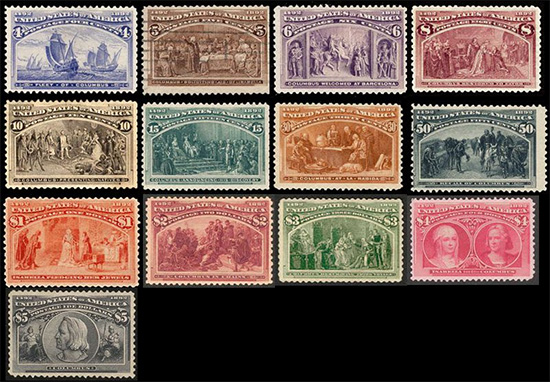
 The 50-stamp mint sheet we’re about to discuss, issued by the United States on February 23, 1976, includes the flag of each state on separate stamps.
The 50-stamp mint sheet we’re about to discuss, issued by the United States on February 23, 1976, includes the flag of each state on separate stamps.
The flags are arranged in the order of the state’s admission to the union. Each stamp includes the inscription “Bicentennial Era 1776 – 1976”
and the U.S. Bicentennial emblem.

Each with a different style and principle of design, these modern state flags date from the 1890s and
were proudly displayed at the 1893 World’s Columbian Exposition. Most were designed and adopted between 1893 and WWII.

The World’s Columbian Exposition, celebrating the 400th anniversary of Christopher Columbus’s landing in America, was actually held in 1893, a year later than planned. New York City, Washington, D.C., St. Louis, and Chicago had competed for the honour of housing the exposition, and it was during this vigorous and often vocal competition that Charles A. Dana, editor of the New York Sun, dubbed Chicago “that windy city”. Chicago’s lobbyists finally won out and, on April 25, 1890, President Benjamin Harrison signed the act that designated Chicago as the site for the exposition. It took three years of preparation and work to produce the exposition. Although dedication ceremonies were held on October 21, 1892, the fairgrounds were not opened to the public until May 1, 1893. 716,881 people attended the Exposition for “Chicago Day”, October 9, 1893. This day commemorated the anniversary of the Great Chicago Fire of 1871. The exposition closed on October 30, 1893.

The U.S. issued a set of stamps in 1893 to commemorate Columbus’s landing (see above). The sixteen Columbian stamps were issued in denominations ranging from one cent to five dollars. The total face value of $16.34 was more than many collectors of the time could comfortably afford and the higher values did not sell well. The Columbian Issue stamps were the last produced by the American Bank Note Company before stamp production was turned over to the Bureau of Engraving and Printing in 1894.
![]()
